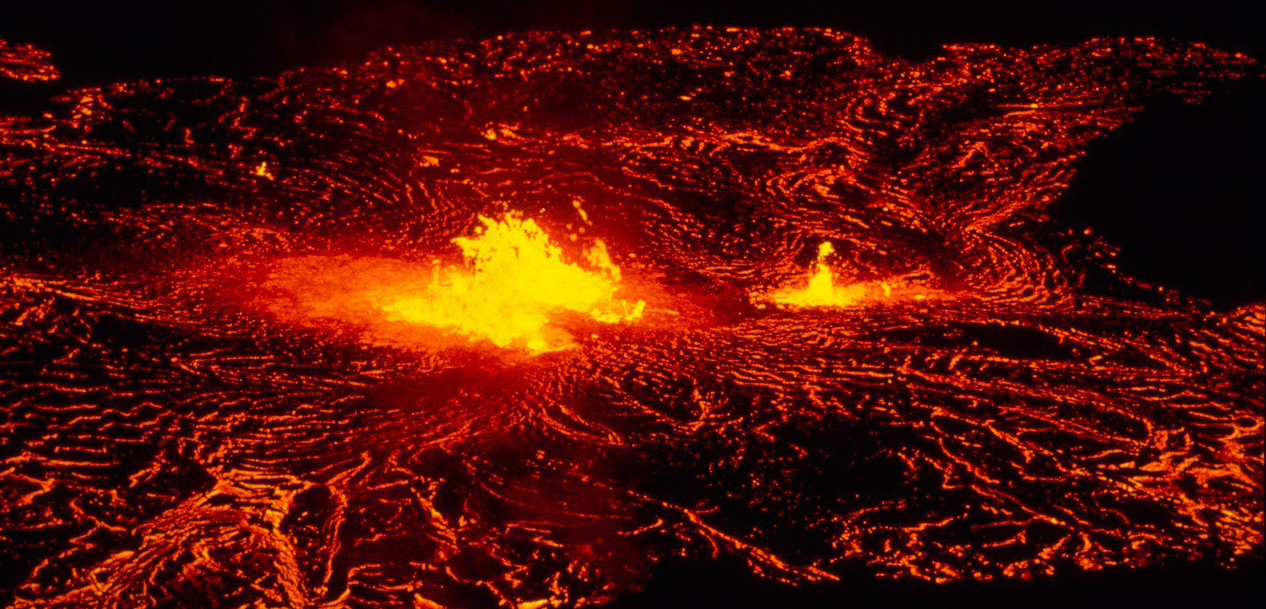
Pixabay
Life on Earth had a rocky start – literally. For hundreds of thousands of years the planet was a hellish place. This period in geological history is called ‘Hadean’, and it was thought that no living thing could have survived. Life emerged so soon after Earth cooled that scientists have wondered how it could have been possible – but new results this year tell a different story.
Planets such as our own grow through a process of ‘accretion’ – which starts with tiny particles in a cloud of dust and gas. These are remnants of an exploded star, and they collect together through their electric charges – positive attracted to negative – gradually building up into larger rocky bodies by a process of collision and gravitational attraction. Ultimately, this process gave rise to the rocky planets of our solar system including the Earth. The best estimate of when this process was completed for Earth (according to geological dating techniques) is 4567 million years ago.
At that time there were other large planets in the solar system, and their orbits crossed paths with Earth. At about 4500 million years ago (we do not have a precise date) there was a ‘mega-collision’ between the Earth and a planetary body, which was destroyed, known as Theia. This was the moon-forming event, and it melted most of the Earth as well as Theia, so a major portion of Earth became an internal ‘magma ocean’. Some of this molten material was shot out into space and sent into orbit around Earth to ultimately form our Moon. A similar melting event, or maybe the same one, allowed the metals in our planet to be separated by gravity from the outer silicon-based layer, forming the Earth’s metallic core.
Even after the moon-forming, core-melting, giant impact planet Earth did not settle down to a quiet life. Several hundred million years after the planets in our solar system formed, they rearranged themselves in a way which allowed a huge amount of debris into Earth’s orbit. The interplanetary rubbish collided with Earth in an event which is known as the Late Heavy Bombardment. The most obvious evidence of this event is in the heavily cratered surface of the Moon.
We also now know that the metallic elements in the Earth’s silicon-based mantle are more abundant than scientists expected. Looking at how metals and silicon-based compounds might have separated during the formation of the Earth’s metallic core, it seems that Earth received some extra metals after the core was formed. This input of rare metallic elements was most likely delivered by metal-rich meteorites – interplanetary debris – so this is another piece of evidence for the heavy bombardment of the young planet Earth.
So even long after it was formed, Earth was still a ‘hellish’ place in which there were frequent meteorite and asteroidal impacts. These would have triggered massive volcanic eruptions which sterilised the surface of the planet, and if there were oceans, would have boiled and sterilised them to several hundred meters depth. All in all, this made the Earth a very hostile environment for the beginnings of life.
| Time scale for the early Earth (the Hadean and early Archaean eons) | Millions of years |
| Formation of the Earth | 4567 |
| Moon/Core formation, melting and the creation of a magma ocean | ca 4500 |
| Oldest Earth materials in the rock record and maybe water on Earth | 4300 |
| Late heavy bombardment | 3950 |
| Narrow time window for life to emerge on Earth | |
| Earliest Life (found in west Greenland) | 3700 |
| Well established life (found in western Australia) | 3500 |
Most scientists now think that the late heavy bombardment occurred at about 3950 million years – a mere 200-250 million years before the first record of life on Earth (see my post on ‘Life as old as the Earth?’) This narrow time window seems unreasonably short, because those first-recorded organisms were sophisticated single-celled algae that could make energy from sunlight in a process called photosynthesis. The first actual living organisms must have appeared much earlier on, narrowing the time-window even further – but thankfully some new results have simplified (or perhaps complicated) the story.
This year[1]a new scientific report was published, calculating the intensity of the ‘late heavy bombardment’. The authors also calculated the effect of the bombardment on the habitable zone of the planet. These new results show that there is no ‘plausible situation in which subsurface habitable zones were fully sterilised’ – in a range of different possible scenarios. In other words, despite the hostile environment of high surface temperatures, huge projectiles, large volcanic eruptions and boiling oceans, early biological activity had the opportunity to establish itself and then re-establish itself between these cataclysmic events. This gives a wider and more reasonable time window for the origin of life than we had previously thought.
When we combine the hostile environment on the early Earth together with the complexity of events required to construct the first living molecules (see my post on ‘Making the Molecules of Life’), we might conclude that life on Earth is highly improbable. The fact that life exists seems, on the face of it, to be a puzzle. But it is here and we are the evidence. So does that mean that life will emerge on any similar Earth-sized rocky planet? Or – and this is a question for further research into those (hidden) Hadean times – is our planet in some way special amongst all the other possible rocky planets which must exist in other solar systems?
[1]‘Direct thermal effects of the Hadean bombardment did not limit early subsurface habitability’Grimm & Marchi, Earth and Planetary Science Letters 485 (2018), 1-8.

© Faraday Institute
Professor Hugh Rollinson is Course Director at the Faraday Institute and Emeritus Professor of Earth Sciences at the University of Derby. After graduating from Oxford Hugh worked for a number of years as a field geologist in the Geological Survey of Sierra Leone. This was followed by a PhD at the University of Leicester and then a post-doc at the University of Leeds. He then joined the University of Gloucestershire and worked there for 20 years, during which time he took a three year leave of absence to work as Associate professor of geology and head of Department in the University of Zimbabwe. He then took a position as Professor of Earth Sciences and Department Head at Sultan Qaboos University in Oman for six years after which he served as Professor of Earth Sciences and Department Head at the University of Derby. Hugh’s academic interests are in the earliest part of Earth history – the first two billion years of planetary evolution and these are summarised in his text ‘Early Earth Systems’ (Wiley-Blackwell, 2007).
Hugh has had a life-long commitment to the Christian faith and has sought to integrate his beliefs with his scientific work. This has largely been through serving the local church wherever he has lived. He has a strong commitment to making the Christian faith accessible and engaging in dialogue with those who hold divergent views.




